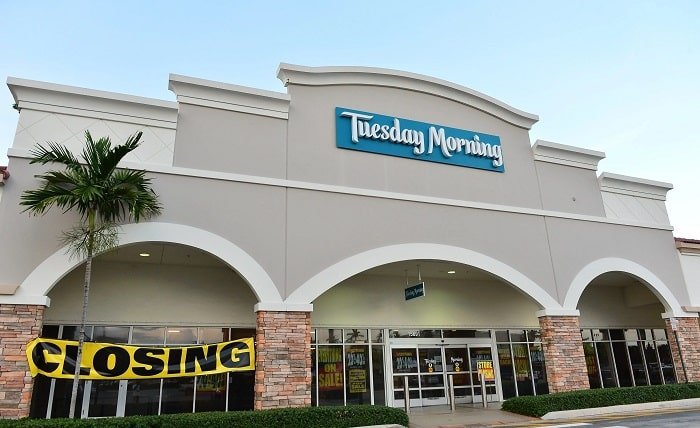Home Goods Closing: What It Means for Consumers and the Retail Landscape

Introduction
The news of Home Goods closing stores across various locations has sent ripples through the retail world. For years, Home Goods has been a go-to destination for affordable and stylish home decor. However, the announcement of store closures has left many consumers and industry experts wondering about the future of this beloved brand. In this blog post, we will delve into the reasons behind the Home Goods closing phenomenon, its impact on consumers, and what the future holds for the retail giant.
The History of Home Goods and Its Rise to Prominence
Before diving into the reasons behind Home Goods closing, it’s essential to understand the brand’s journey. Home Goods, a subsidiary of TJX Companies, was founded in 1992 and quickly became a household name. Known for offering high-quality home decor items at discounted prices, Home Goods grew rapidly, expanding its footprint across the United States. The brand’s success was largely due to its ability to provide trendy, affordable, and diverse home goods, catering to a broad range of tastes and preferences.
Reasons Behind Home Goods Closing Stores
The decision to close certain Home Goods stores is multifaceted. One primary reason for Home Goods closing is the shift in consumer behavior. With the rise of e-commerce and changing shopping habits, more consumers are opting to shop online rather than visit brick-and-mortar stores. This shift has led to decreased foot traffic in physical stores, making it difficult for retailers like Home Goods to maintain profitability in certain locations.
Another factor contributing to Home Goods closing stores is the broader economic environment. The retail sector has faced numerous challenges, including increased competition, rising operational costs, and changing market dynamics. These factors have forced Home Goods to reevaluate its store portfolio and make strategic decisions to close underperforming locations.
The Impact of Home Goods Closing on Consumers
The announcement of Home Goods closing stores has raised concerns among loyal customers. For many, Home Goods has been a reliable source for affordable home decor, and the closures may limit access to these products. Consumers in areas where stores are closing may have to travel farther to find similar items or resort to online shopping, which may not provide the same experience as browsing in-store.
Moreover, the closure of Home Goods stores could lead to reduced product availability and variety. As the brand consolidates its operations, it may focus on stocking fewer items, leading to a narrower selection for customers. This change could impact shoppers who rely on Home Goods for specific products that are not easily found elsewhere.
The Broader Retail Impact of Home Goods Closing
Home Goods closing stores is not an isolated event; it reflects a broader trend in the retail industry. The shift towards online shopping, combined with economic pressures, has led many retailers to downsize their physical presence. As more stores close, the retail landscape is undergoing significant changes, with fewer traditional shopping destinations and more emphasis on e-commerce.
The closure of Home Goods stores also has implications for local economies. When a store closes, it often leads to job losses and reduced economic activity in the surrounding area. This ripple effect can be felt by other businesses that rely on foot traffic generated by Home Goods, such as neighboring shops and restaurants.
The Future of Home Goods: What Comes Next?
While Home Goods closing stores is a reality, it doesn’t necessarily spell the end for the brand. In fact, Home Goods is likely to adapt to the changing retail environment by focusing more on its online presence and optimizing its remaining stores. The brand may also explore new strategies to attract customers, such as enhancing the in-store experience or offering exclusive online deals.
Additionally, Home Goods could invest in technology to streamline operations and improve customer engagement. By leveraging data analytics and customer insights, the brand can better understand consumer preferences and tailor its offerings accordingly. These strategies could help Home Goods remain competitive in a challenging retail landscape.
How to Navigate the Changes as a Consumer
For consumers affected by Home Goods closing stores, adapting to the changes can be challenging. However, there are several ways to navigate this transition. One option is to explore other retailers that offer similar products, both online and in-store. Brands like Marshalls, Ross, and Bed Bath & Beyond provide a range of home decor items that may meet your needs.
Another option is to embrace online shopping, where Home Goods continues to offer a wide selection of products. While the experience may differ from shopping in-store, online platforms provide convenience and access to a broader range of items. Additionally, signing up for newsletters and following Home Goods on social media can help you stay informed about new product arrivals and special promotions.
The Role of E-commerce in the Future of Home Goods
As Home Goods closing stores becomes a reality, the role of e-commerce in the brand’s future cannot be overstated. Online shopping has become increasingly popular, and Home Goods is likely to focus on expanding its digital presence. By enhancing its e-commerce platform, the brand can reach a wider audience and offer a seamless shopping experience.
Moreover, Home Goods may explore new digital strategies, such as personalized recommendations and virtual showrooms, to engage customers online. These innovations can help replicate the in-store experience and provide shoppers with inspiration for their home decor needs. As e-commerce continues to grow, Home Goods must stay ahead of the curve to remain relevant in a competitive market.
Community Response to Home Goods Closing
The news of Home Goods closing stores has elicited a range of responses from communities across the country. For many, the store has been more than just a retail outlet; it’s been a place to find unique items and create beautiful homes. The closure of these stores has led to disappointment and concern among loyal customers who have come to rely on Home Goods for their decor needs.
In some communities, local businesses and residents have organized petitions and campaigns to keep their Home Goods stores open. These efforts reflect the deep connection that many people have with the brand and their desire to preserve it as part of their local retail landscape. While these initiatives may not prevent closures, they highlight the importance of Home Goods to the communities it serves.
Adapting to a New Retail Reality
The retail industry is undergoing significant changes, and Home Goods closing stores is just one example of this transformation. As consumers, it’s essential to adapt to this new reality by exploring alternative shopping options and staying informed about industry trends. While the closure of beloved stores like Home Goods can be disheartening, it also presents an opportunity to discover new brands and products.
By staying flexible and open to change, consumers can continue to enjoy a wide range of home decor options, even in the face of store closures. Whether through online shopping, exploring other retailers, or supporting local businesses, there are still plenty of ways to create a beautiful home.
Conclusion: The Future of Home Goods and the Retail Industry
The closure of Home Goods stores marks a significant shift in the retail landscape. As the brand adapts to changing consumer behaviors and economic pressures, it will likely focus on optimizing its remaining stores and expanding its online presence. While Home Goods closing is a reality that many consumers will have to face, it also signals the need for the brand to innovate and evolve.
For consumers, the changes may require adapting to new shopping habits and exploring alternative options. However, the enduring appeal of home decor and the desire to create beautiful living spaces will continue to drive demand for brands like Home Goods. As the retail industry continues to evolve, Home Goods will need to find new ways to connect with its customers and remain a relevant player in the market.
FAQs
1. Why is Home Goods closing stores?
Home Goods is closing stores due to changing consumer behavior, increased competition, and economic pressures that have affected its profitability.
2. How will Home Goods closing stores impact consumers?
Consumers may face limited access to Home Goods products, reduced product variety, and the need to explore alternative shopping options.
3. Will Home Goods continue to operate online?
Yes, Home Goods will likely focus more on its online presence, offering a wide range of products through its e-commerce platform.
4. What can consumers do in response to Home Goods closing?
Consumers can explore other retailers for similar products, embrace online shopping, and stay informed about new deals and promotions from Home Goods.
5. How will the retail industry change with Home Goods closing?
The closure of Home Goods stores reflects a broader trend of retailers downsizing their physical presence and focusing more on e-commerce and digital strategies.




